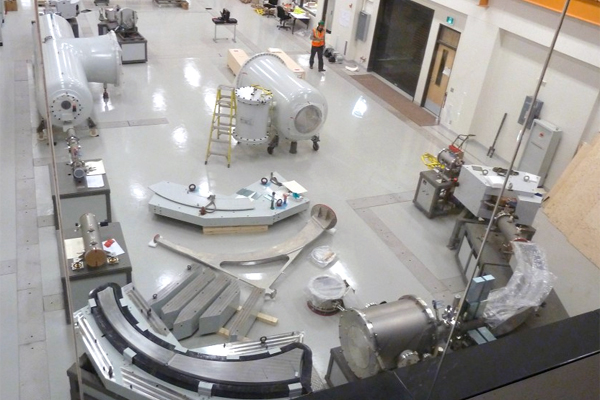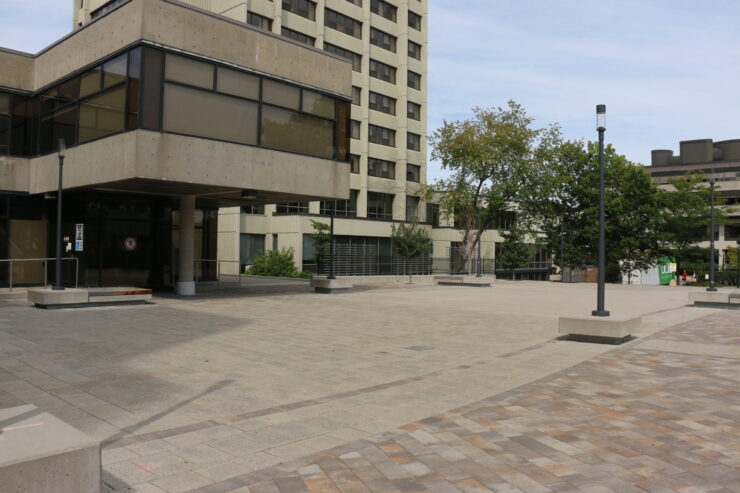New research equipment to be housed in Advanced Research Complex
Photos courtesy of Dr. Liam KieserThe University of Ottawa is now the proud owner of a $5-million accelerated mass spectrometer (AMS) located in the Advanced Research Complex (ARC). The AMS, the only one in Canada and one of a handful in North America, required specific technicians for its assembly and a crane to move its eight-ton magnet.
Matt Herod, a PhD candidate in geochemistry, tracked the instrument’s unboxing on his blog.
“I like to think of it as a regular mass spectrometer on steroids,” he said. “It’s just got so much more power and ability. The reason we use the AMS is because it lets us analyze really, really tiny quantities of things that a normal instrument just would never be able to get down to low levels like that.”
Herod described the AMS as being able to analyze elements that aren’t technically possible with other types of instruments. The AMS would primarily be used in environmental and health sciences for uses such as radioactive dating, testing ground water, and carbon dating.
“(In) my research, I use an isotope called Iodine 129 to trace everything from fallout from Fukushima to what happens to radioactive waste if it’s being stored underground,” Herod said. “With normal mass spectrometers, you couldn’t even use these elements as tracers (…) so the AMS lets us analyze a lot of different isotopes that are really useful but its analytical tools just don’t have the capability to do it.”
Ian Clark, a professor of earth sciences at the U of O, was the principle personal responsible for bringing the AMS to the U of O. Clark received a grant almost six years ago and undertook the project of bringing the equipment to campus. Both Clark and Jack Cornett — another professor involved with the AMS — were unable to comment, but Herod said bringing the equipment required a huge amount of experts and dedicated space.
“It was quite a saga between getting the machine, getting the space, and a new building built for the machine as well. All of this stuff has come together over a long period of time,” he said.
The university still has regular mass spectrometers on campus. According to Herod, the new AMS won’t render the regular mass spectrometers obsolete.
“There is still a need for the other ones,” he said. “Because of the way the AMS is built, it’s like trying to make toast with a propane torch which is overkill. We’ve got more affordable machines that we already have to do the more common stuff and frankly, they’re better at it.”
Herod said the new AMS and the facility it is housed in splits up the earth science department to allow only half the science students to utilize the equipment. The geology department is located in Marion until students involved with the ARC move to the new facility, whereas those not involved with the ARC will relocate to the FSS building.





